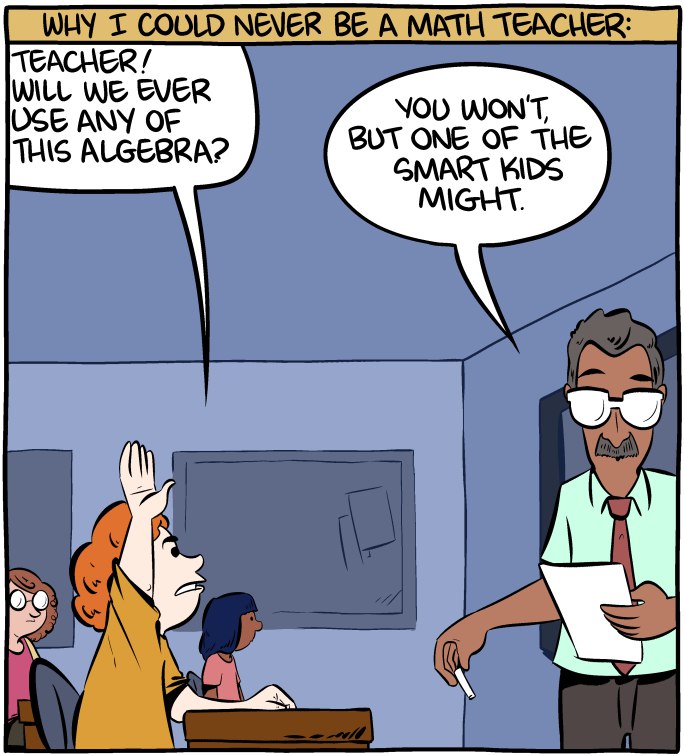Ranter
Join devRant
Do all the things like
++ or -- rants, post your own rants, comment on others' rants and build your customized dev avatar
Sign Up
Pipeless API

From the creators of devRant, Pipeless lets you power real-time personalized recommendations and activity feeds using a simple API
Learn More
Comments
-
That's actually how you divide by hand. I still learnt this in elementary school.
After the first whole number 2, you place the decimal point and multiply the 6 by 10, which is 60. Integer division by 32 is 1 (first digit after the decimal point), rest 28. Multiply by 10 for the second decimal digit, which is 280. Integer division by 32 is 8, rest 24. Multiplied by 10 is 240, integer divided by 32 is 7 rest 16. Multiplied by 10 is 160, divided by 32 is 5 without rest.
Result is 2.1875. -
 turbod3006yAlmost correct. Since you want a continuous fraction, you need to do what you are saying until:
turbod3006yAlmost correct. Since you want a continuous fraction, you need to do what you are saying until:
70/32 = 2 + 6/32 = 2 + 1/(32/6)
and repeat for 32/6.
Related Rants


 Math is hard.
Math is hard. When you wanted to know deep learning immediately
When you wanted to know deep learning immediately :)) finally a good answer
:)) finally a good answer
So, forgive my ignorance, this isn't a troll just a question.
How are continued fractions related to modular arithmetic?
Take the following example:
70%32 = 6
70//32 = 2
which we can just represent as
6+(32*2)
Now, as a continued fraction, we would do
70/32 = 2 + 6/32
and repeating what we just did but for 6/32, as you would with a continued fraction.
Am I actually doing everything correctly here or am I missing something?
random
ipromise
notatroll
math